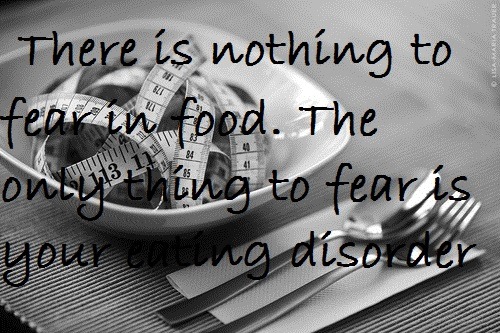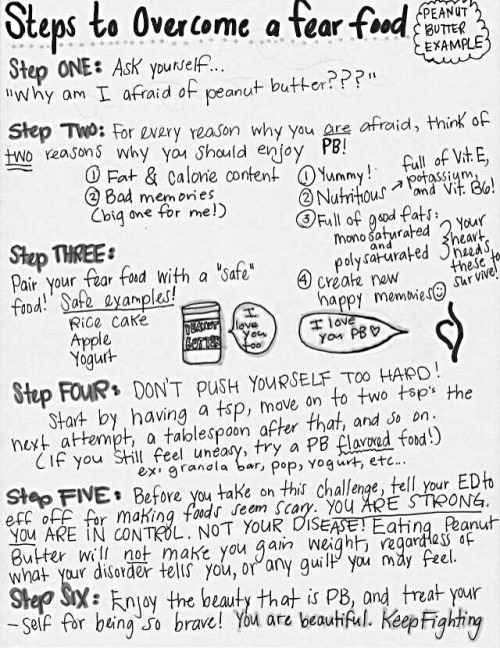I kind of freaked out a bit.
Because there was an Oreo. And I was expected to eat it. And I hadn't eaten anything all day. And it was an Oreo. With calories in it. And fat. And it was a cookie. A fear food. An Oreo.
"Oreos are the worst cookie."
My chemistry teacher in high school hated Oreos. She had all sorts of reasons about why they were bad for you. And well, I don't like them much either.
 Fear foods. They suck. I have a lot of them right now. Bacon. Sausage. Bread. Cheese. Pizza. Chips. Non-diet soda. French fries. Fast food. Mac and cheese. Mashed potatoes. Cookies. Cake. Candy. Doughnuts. Restaurant food in general. Food that I do not know the specific calorie count of. Hot chocolate. Fried food. Peanuts. Peanut butter. Butter. Sour cream. Eggs. Caloric beverages. Anything like that.
Fear foods. They suck. I have a lot of them right now. Bacon. Sausage. Bread. Cheese. Pizza. Chips. Non-diet soda. French fries. Fast food. Mac and cheese. Mashed potatoes. Cookies. Cake. Candy. Doughnuts. Restaurant food in general. Food that I do not know the specific calorie count of. Hot chocolate. Fried food. Peanuts. Peanut butter. Butter. Sour cream. Eggs. Caloric beverages. Anything like that. Today I learned that there is a distinction between "fear foods" and "trigger foods." You can read more about that here. Basically, a fear food is a food that a person with an eating disorder is literally afraid of. It could be something that person thinks will pass calories just by touching, which is an example of a type of magical thinking called the law of contagion, which is the belief that if two things touch, the properties of one will be transferred to the other. Or the food itself will just elicit anxiety to the patient. These foods are systematically eliminated from a person's life. One of the goals of treatment is to eliminate fear foods to allow a recovered person to enjoy them in every day life again.
 |
| Fear foods during treatment |
I think that I managed to get away with eating only one piece of bacon that day. It was the first time in four or five years that I had eaten bacon. And I haven't eaten any since then. I'm still afraid of the caloric and fat content involved in eating it.
For me, my biggest trigger food is ice cream. Any time I eat any type of ice cream or any kind of ice cream, I have to fight off a binge-purge cycle. More often than not, I will eat a normal amount of ice cream and not be able to resist throwing up. It's something that I cannot keep in my body because of the powerful triggering effects it creates. So now I just don't eat it.
Trigger foods are different from fear foods in that they elicit a behavioral response, while fear foods elicit an emotional response. A lot of times, these two types of foods can be confused. I know that they were confused for me during treatment.
Both are things that need to be dealt with in treatment in order for someone to fully overcome their eating disorder and return to "normal" eating. And maybe some day, later on in my recovery journey, I will be able to conquer my fear foods, but for right now, I'm just going to take it one day at a time.
Back to the Oreo story. The reason that he brought us the Oreos is apparently because "treats increase positive affect, but only if they are not expected." He then went on to explain the study behind it and how when he was working in someone's lab, they used to give their participants a cookie when they did the debriefing to increase their positive emotions. I do have to admit that I felt a little bit better because he surprised me with something as small as Oreo, although I'm not sure that it made up for the amount of anxiety that it provoked... These studies are focused on the "normal population" after all, so generally not people with eating disorders. (Future study idea? I think yes.)
 And that Oreo? I ate it. Not in front of my professor and her husband (who is also a professor, but not my professor, so I feel like I can't loop him into the "my professor" category), but I ate it. I think that might be progress. I'll take the little victories when they come.
And that Oreo? I ate it. Not in front of my professor and her husband (who is also a professor, but not my professor, so I feel like I can't loop him into the "my professor" category), but I ate it. I think that might be progress. I'll take the little victories when they come.Why Recovery is Worth It: So that I can eat what I crave and enjoy it.

No comments:
Post a Comment